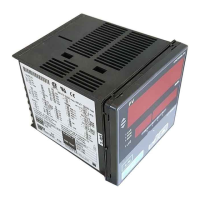<Toc> < 6. Function Block Diagram and Descriptions >
6-7
IM 05D01C02-41E 3rd Edition: May 31, 2006-00
■ Target Setpoint and PID
It is possible to use a maximum of eight groups of target setpoints and PID parameters.
The target setpoint can be selected by key operation or contact input. For selection by
contact input, refer to “Contact Input.”
Operating Parameters
Function Parameter Main menu Submenu
Target setpoint number selection SPN MODE None
Target setpoints 1 to 8 n.SP LP1 n.PID
Proportional band (P) n.P LP1 n.PID
Integral time (I) n.I LP1 n.PID
Derivative time (D) n.D LP1 n.PID
Cooling-side proportional band (Pc) n.Pc LP1 n.PID
Cooling-side integral time (Ic) n.Ic LP1 n.PID
Cooling-side derivative time (Dc) n.Dc LP1 n.PID
Note: Parameters n.SP, n.P, n.I, n.D, n.Pc, n.Ic n.Dc (n=1 to 8), and submenu n.PID (n= 1 to 8) correspond to the target
setpoint number selected in the target setpoint number selection (SPN).
The target setpoint ramp rate setting function prevents the target setpoint form changing
suddenly. It is possible to set the upward and downward changing rate (i.e., ramp rate)
independently in the parameters UPR and DNR. The unit of the ramp rate (hour, or minute)
is specified in TMU.
Setup Parameters
Function Parameter Main menu Submenu
Ramp-rate time unit setting TMU LOOP1 SP
Operating Parameters
Function Parameter Main menu Submenu
Target setpoint ramp-rate setting UPR, DNR LP1 PAR

